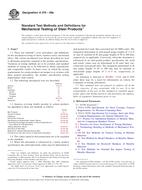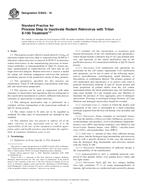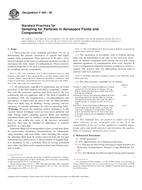1.1 This test method covers general test procedures and evaluation criteria for the corrosion resistance of surgical instruments intended for reuse in surgery and fabricated from stainless steel such as, but not limited to, those listed in Specification F899.
1.2 Austenitic (Class 3), martensitic (Class 4), precipitation hardenable (Class 5), and ferritic (Class 6) materials shall use the boil test.
1.3 Ferritic (Class 6) materials with a minimum 16 % chromium content, austenitic (Class 3), and precipitation hardenable (Class 5) materials shall use the boil test and the copper sulfate test.
1.4 The copper sulfate test is used to detect the presence of metallic iron and iron oxide on the surface of materials.
1.5 The copper sulfate test is not recommended for martensitic materials. (See Note X1.1.)
1.6 The boil test is applicable to martensitic, austenitic, ferritic, and precipitation hardenable materials to detect free iron or any other anodic surface contaminants on stainless steel.
1.7 Values in either inch-pound or SI are to be regarded separately as standard. The values stated in each system may not be exact equivalents; therefore each system shall be used independent of the other. Combining values from the two systems may result in non-conformance with the specification.
1.8 This standard does not purport to address all of the safety concerns, if any, associated with its use. It is the responsibility of the user of this standard to establish appropriate safety and health practices and determine the applicability of regulatory limitations prior to use.
Product Details
- Published:
- 09/01/2010
- Number of Pages:
- 3
- File Size:
- 1 file , 68 KB
- Redline File Size:
- 2 files , 130 KB


